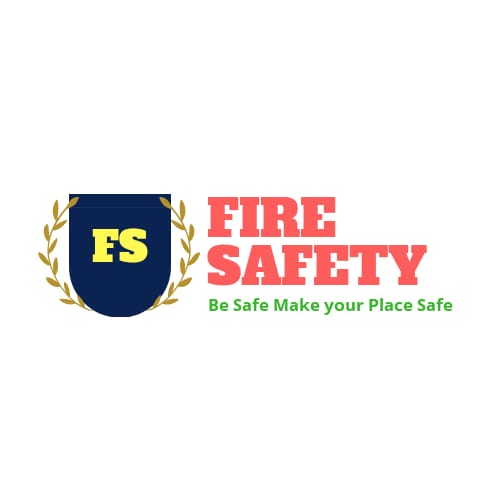 |
| Fig1. Basic Scaffold Technical Information | Hazards | Precautions |
Namastay, Dear All
Dear Professional's,
Hope you are fine , All is Well !
During 3rd stage of COVID-19 Diseases I personally request to all my friends please stay at home,Be Alert Be Safe and helps to #Corona #Worriors for #fightagaintscorona
Gives lot of Respect to our #RealHero's.
First Question comes in your mind, What Is Scaffold ?
In short, "Scaffold is a temporary elevated working platform ( Structure)".You can Increse our moral with Provide your Answer in comment box respectively.
2.Independent Scaffold (6 Standard------Use in-Building Site)
3.Burd Case Scaffold (9 Standard------Use As per Requirement )
4.Mobile Scaffold (Use & Design As per Requirement )
In short, "Scaffold is a temporary elevated working platform ( Structure)".You can Increse our moral with Provide your Answer in comment box respectively.
Types of Scaffolding
1 Tower Scaffold (4 Standard------Use in-Construction/Refinery Site)2.Independent Scaffold (6 Standard------Use in-Building Site)
3.Burd Case Scaffold (9 Standard------Use As per Requirement )
4.Mobile Scaffold (Use & Design As per Requirement )
5.Frame (Fabrication Frame )Type Scaffold
6.Tube (IS-1139) & Coupler (clamp) Type Scaffold
7.Cup-locks System Scaffold
6.Tube (IS-1139) & Coupler (clamp) Type Scaffold
7.Cup-locks System Scaffold
One Basic Scaffold Shall be made by following Componets are;
1. Sole Plate ( 300*300 ) mm2. Base Plate (150*150 ) mm - 4mm Thickness
3.Standard Tube ( Vertical Pipe)- 6 mtrs. BS 1139 NB(40mm),Thickness (3.2mm),Weights(21 Kgs)
4.Ledgers ( Horizontal pipe)
5.Transoms
6.Clamps
7.Ladder
8.Planks/Jali---- Length (2100mm), Width (280mm )
9.Spirit Level
 |
| Fig.2 Drawing of Scaffold for illustration |
6 Types of Scaffold Clamp
1.Swivel Clamp -Use for Bracing2.Right angel Clamp (90*) - Capacity 12.5KN
3.Ladder Clamp
4.Walk-way Clamp
5.Joint ( Expansion ) Pin
6. Beam Clamp
Some important technical information
*The first lift called Base/Foot/Kicker Lift and it's should 6" inch from Ground*Base Lift to 1st Lift = 6'6" max.height
*Design to support 4 times the max.rated load
*Any Scaffold above 30 mtr. shall be tied every 9 mtrs.
*Ladder should be fixed at 75* degree angel
*For doing level use jack
* Toe Guard height is no less than 150 mm
*Mid railing is fixed at 600mm
*Top railing is fixed at 1200mm
*Between two planks max. Allowed 1'' inch gap
*Scaffold shall be erected 14" inch away from any Wall
Types of Load on scaffold
1.Live Load ---- Working Material,Man,Other2.Dead Load-----Scaffolding Material
3.Envrionment Load-----After some Height during high wind,Bad weather
As per OSHA Scaffold Load Calculation
This is Universal and given by OSHA 29-CFR ,So it's very easy to find LD/MD/HD scaffold to use this tricks......Light Duty = 150 kg/m2 2.7mtr
Medium Duty = 250kg/m2 2.4 mtr
Heavy Duty = 375 kg/m2 1.8 mtr Distance Between Standard to Standard fixed -Universal
This is the formula to calculate scaffold laod
 |
| Fig.3 Construction Site |
where, L=Length
W=Width
Light Duty = 2.7*1.8*150=729 kg/m2
Medium Duty =2.4*1.8*250= 1080 kg/m2
Heavy Duty = 1.8*1.8*375=1215 kg/m2
What are the key Hazards associated with use of Scaffolds?
Main Hazards,1.Falls from the scaffold during erection
2.Falls from the work Platform
3.Objects/material falling from the Platform
4.Collapse of the Scaffold Structure
5.Contact with Live overheads/Electrical shock/Electrocution
6.In Mobile Scaffold 1. [ Overturn (toppling ) of the mobile tower]
2. Unintended movement of the wheels
What are the precautions/Control Measures to be taken while use of Scaffolding ?
Control Measures/Precautions to be taken while erection/dismentling and Safe using ,
1. Correctly Designed for use and load
2.All Scaffold over 20 mtr. in height will be designed by competent person such as Structural Engineer.
3.Designed for weather
4.Personal Fall Arrestor System (PFAS)
5.Stable Ground,Firm and strong soil
6.Use Base Plate and Sole Plate
7. Scaffold not damaged and in good condition
8.Erected by competent person
9.Inspected before use
10.provision of Tying and Bracing
11.Protected from vehicle
12.Guard-rail fitted to the working platform
13.wheel lock when working on tower scaffold
14.People and material should not remain on the tower when it is moved.
15.Routine check/Inspection of scaffold can prevent missused.
Thanks a lot for Your Kind Support !
Safe Regards,
FireSafetyRevolution Team
5.Stable Ground,Firm and strong soil
6.Use Base Plate and Sole Plate
7. Scaffold not damaged and in good condition
8.Erected by competent person
9.Inspected before use
10.provision of Tying and Bracing
11.Protected from vehicle
12.Guard-rail fitted to the working platform
13.wheel lock when working on tower scaffold
14.People and material should not remain on the tower when it is moved.
15.Routine check/Inspection of scaffold can prevent missused.
 |
| Fig.4 Scaffold erection work |
Thanks a lot for Your Kind Support !
Safe Regards,
FireSafetyRevolution Team





